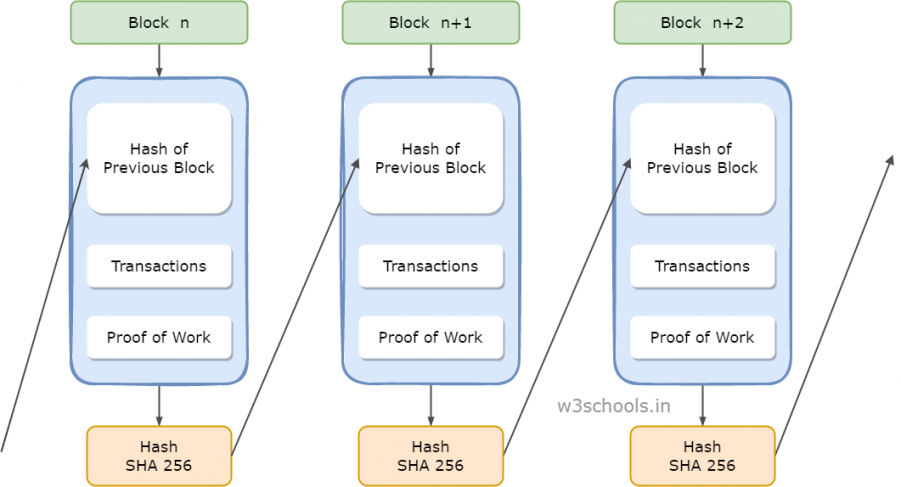Blocks are created by various miners and technology users and form a truly distributed public ledger. It is essential to understand how the chains in the blocks work. These blocks in the chain may come from the miners, and these miners create the chain of blocks through their unique immutable transactions. In this tutorial, you will learn how a chain of blocks is formed and works in a blockchain.
Chain of Records
The primary work of a cryptographic (protected) chain of blocks was illustrated in the year 1991 by Stuart Haber along with W. Scott Stornetta. They sought to put into practice a system where document time stamping could not be tinkered with or modified at any point. Again, in 1992, Bayer, Haber with Stornetta incorporated Merkle trees in designing an improved efficient system by letting numerous document certificates be composed into a single block in a series chain.

Each block in the chain contains multiple messages, i.e., transactions. In a chain, these blocks may come from miners who will use this blockchain technology-based services. As the chain of blocks is created, you can see a rule used in this Blockchain technology where the hash of the previous block gets added to the present or current block.
Hence, when creating any block, a miner picks up the hash from the previous block (unrecognized), creates the chain of blocks, and then merges it with its cluster of messages and creates a hash for the newly formed block. This recently created block now becomes the new end of the chain, and accordingly, the chain continues, with more and more blocks being added to it by miners.
Chaining the Blocks With Hash
Imagine a collection of blocks of transaction data. Let us consider three blocks, all containing some transaction data. You can view it as three boxes where three different transaction information is residing, as shown in the image below:

The first block will chronologically be the initial transactions that occupied 1 MB; after that, the subsequent transactions would be described as a second block up to a different Size, which will continue. These are data blocks where the transaction details are stored and linked (i.e., chained) together. By doing this, each block gets an exclusive (digital) signature that accurately corresponds to the data string within that block. If anything within a block changes, even a very minute change in the block will produce a new signature and hence a new block. Therefore, modification of blocks in a Blockchain is impossible.
Blockchain Version
The evolution of Blockchain technology is mentioned by its versioning from 1.0 to 3.0. The initial version, i.e., version 1.0, was Currency, where the idea of creating money digitally through solving computational puzzles finally gave rise to cryptocurrencies. The next version, version 2.0, was smart contacts. These are small computer programs that "live" in the Blockchain. They are free programs that get executed mechanically and check conditions, such as facilitation, verification, and enforcement.
The third version of Blockchain was intended for decentralized applications where it uses decentralized storage and communication. Also, its code in the backend runs on a decentralized peer-to-peer network.